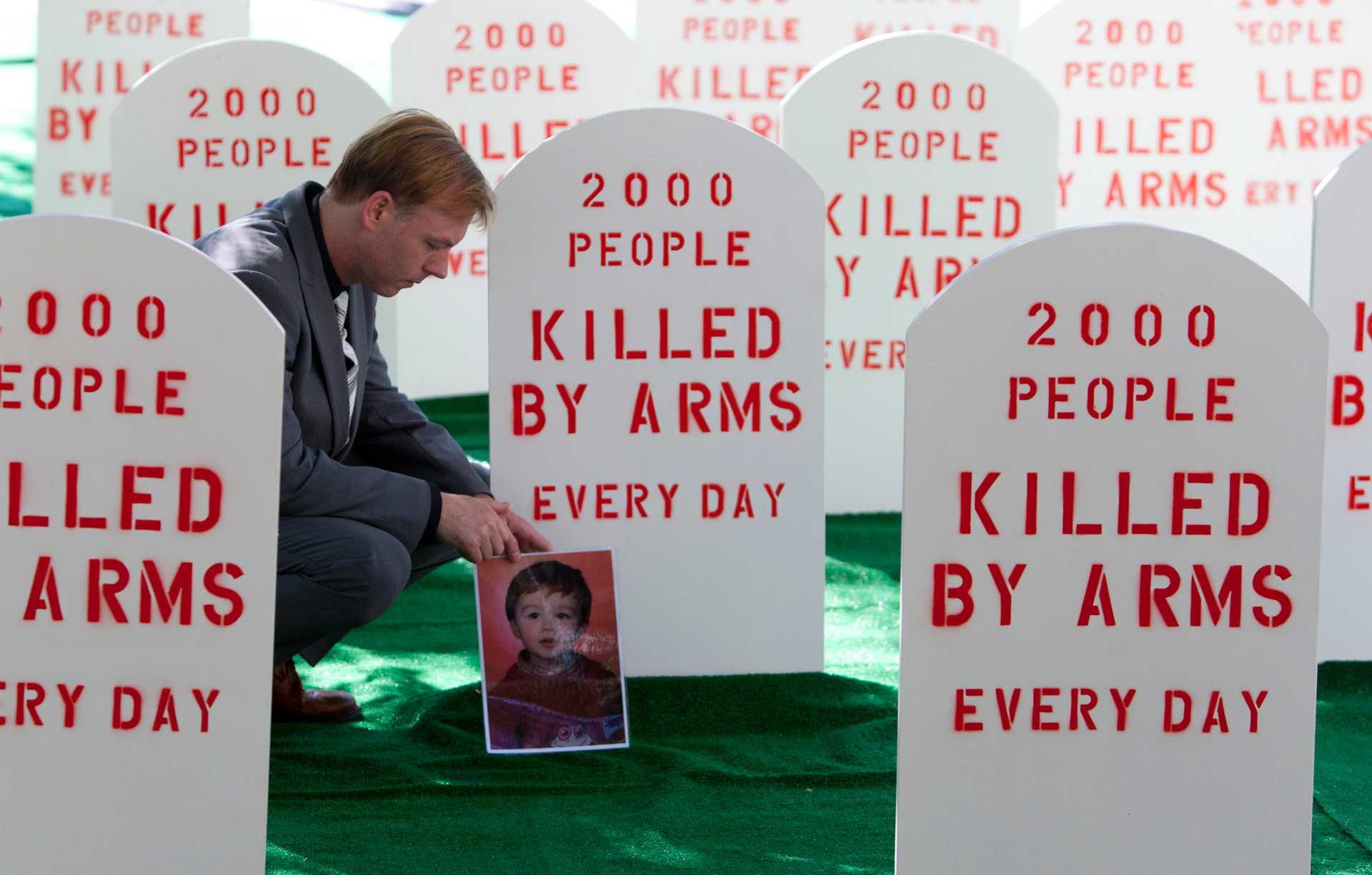
SALW and Cluster Munitions
In this video you will learn about key instruments that contain gender and disarmament aspects dealing with conventional weapons, such as:
- The Arms Trade Treaty
- UN Programme of Action to Prevent, Combat and Eradicate the Illicit Trade in Small Arms and Light Weapons (PoA)
- Convention on Cluster Munitions
- Maputo Action Plan
- Oslo Action Plan
Small Arms and Light Weapons and Gender
The Arms Trade Treaty (ATT, 2014 ) is the first legally binding multilateral instrument to acknowledge the connection between international arms trade and gender-based violence (GBV).
Article 7 (4) states
The exporting State Party, in making this assessment, shall take into account the risk of the conventional arms covered under Article 2(1) or of the items covered under Article 3 or Article 4 in being used to commit or facilitate serious acts of gender-based violence or serious acts of violence against women and children.
Article 7(4)
Member States and civil society have undertaken capacity-building efforts to operationalize Article 7 (4). During Latvia’s ATT presidency in 2018, it announced “gender and arms related gender-based violence” as the priority theme for its presidency. The announcement provided an opportunity to deepen knowledge on the link between categories of conventional arms to which ATT applies and GBV.

Control Arms campaigner David Grimason lays a photo of his son Alistair during a demonstration close to the United Nations building on 25 July, 2012
The UN Programme of Action to Reduce, Combat, and Eradicate the Illicit Trade in Small Arms and Light Weapons (UN PoA, 2001) has also recognized the link between illicit trade in small arms and light weapons and gender-based violence.
Paragraph 14 of the 2018 Outcome Document to the Third Review Conference states:
We remain gravely concerned about the negative impact of the illicit trade in small arms and light weapons on lives of women, men, girls and boys, and recognize that eradicating the illicit trade in small arms and light weapons is a key part of combating gender-based violence.
UN PoA,2001; Paragraph 14 of 2018 Outcome Document.
Gender and Disarmament – Resolutions, Treaties, Conventions and Working Groups
In this video you will learn about key instruments that contain gender and disarmament aspects, such as:
- General Assembly and First Committee resolutions
- Treaty on the Non-Proliferation of Nuclear Weapons
- Treaty on the Prohibition of Nuclear Weapons
- Convention on Certain Conventional Weapons
- Open Ended Working Group on Developments in the Field of Information and Telecommunications in the Context of International Security
General Assembly Resolution
UN General Assembly Resolution 65/69, 8 December 2010 was the first resolution to be adopted by the UN General Assembly’s First Committee on Disarmament and International Security focused on “Women, disarmament, non-proliferation and arms control”. The resolution focused on:
- equitable representation of women in all decision-making processes on matters related to disarmament, arms control and non-proliferation
- support and strengthen the effective participation of women in organizations in the field at the local, national, regional and sub-regional levels
Chart showing percentages od UNGA First Committee Resolutions with Gender References.
Katrin Geyer from the Women’s International League for Peace and Freedom reviewed the number of adopted General Assembly First Committee Resolutions that included gender references over a five-year time span, from 2015 to 2019. The data gathered from the Reaching Critical Will First Committee Monitor publication of November 2019 and illustrated in the above graph, demonstrates a positive upward trend of gender perspectives being increasingly included in peace and security discussions and reflected in adopted resolutions. It is important to note that over the years some resolutions have adopted stronger language on gender, while others included references to gender for the first time.
STATISTICS 2019
17 of the adopted resolutions in the UN General Assembly First Committee included gender references, accounting for 28% of all adopted resolutions.The resolutions addressed:
- women’s equal participation
- gendered impacts of weapon systems and armed violence
- need for gender considerations in disarmament machinery
Of the 17 adopted resolutions, four included language on gender for the first time. The four resolutions focused on:
- Biological Weapons Convention
- Youth
- Conventional Ammunition Stockpiles in Surplus
- Composition of the Group of Governmental Experts on Nuclear Disarmament Verification
Nuclear Weapons and Gender
NPT Review Process
2018 and 2019 PrepCom Chair Factual Summaries/Recommendations to the Review Conference:
- endorsed equal, full and effective participation and leadership of both women and men in nuclear disarmament, non-proliferation and the peaceful uses of nuclear energy
- welcomed an increase in female delegates
- recognized the disproportionate impact of ionizing radiation on women and encouraged discussion in the Treaty on the Non-Proliferation of Nuclear Weapons (NPT) review process
At least three working papers submitted at the 2019 NPT PrepCom included gender references addressing the following topics:
- integration of gender perspectives in the implementation of the NPT
- improving gender equality and diversity in the review process
- incorporating gender in the NPT, including by applying a gender analysis framework, increasing gender diversity at all levels of representation, and recognizing the disproportionate impact of ionizing radiation on women and girls
Ionized Radiation
Women are more vulnerable to the harmful effects of ionized radiation than men.
Long Term: women and girls have a higher risk of developing cancer than men or boys.
Graph constructed for Gender and Radiation Impact Project. 60 years of A-bomb survivor cancer incidence data shown for each age-of-exposure cohort.
Treaty on the Prohibition of Nuclear Weapons
- Cognizant of the disproportionate impact a nuclear weapons detonation has on women and girls – including ionized radiation but also in terms of socioeconomic development, food security and economy.
- Recognizes the need for equal, full and effective participation of both women and men in nuclear disarmament.
- Article 6: Victim Assistance
Each State Party shall, with respect to individuals under its jurisdiction who are affected by the use or testing of nuclear weapons (…) adequately provide age- and gender-sensitive assistance, without discrimination, including medical care, rehabilitation and psychological support, as well as provide for their social and economic inclusion.
Article 6: Vicitme Assistance, "Chance for Peace", speech to American Society of Newspaper Editors.
Women Representation in Disarmament Fora Over Time – 1980 to 2015
Percentage of Women and Men in Arms Control, Non-Proliferation and Disarmament Forums
Women continue to be underrepresented in disarmament, arms control and non-proliferation fora. The two figures to the right were provided by the UN Institute for Disarmament Research and are extracted from their report entitled “Still Behind the Curve: Gender Balance in Arms Control, Non-Proliferation and Disarmament Diplomacy”. The first graph highlights the percent of women represented in Geneva disarmament forums in the year 2018. In all fora for that year, women representation was below the baseline indicator of 36 percent. The second graph highlights women representation in meetings relevant to the disarmament, arms control and disarmament field with more than 100 participants. The average female representation in such meetings is 32 percent, which is below the average baseline and distant from gender parity aspirations.
For more information on the images and for further graphs on female representation in disarmament, non-proliferation and arms control fora, please read the UNIDIR “Still Behind the Curve” report from 2019.